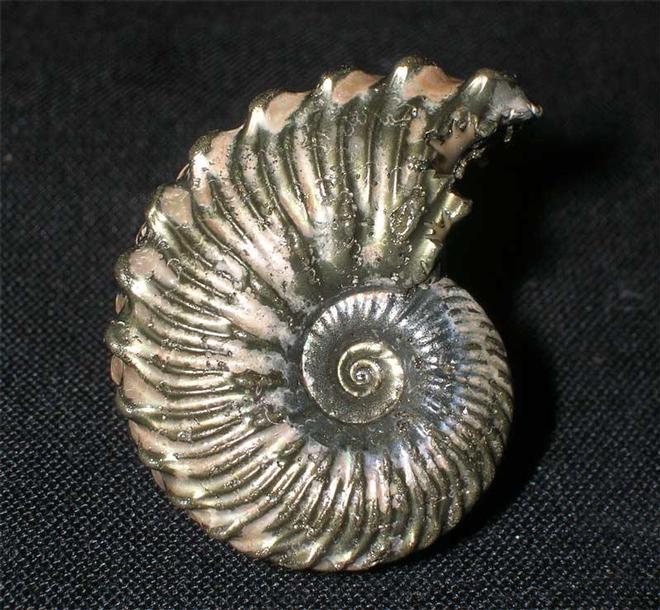Euhoplites Lautus on:
[Wikipedia]
[Google]
[Amazon]
''Euhoplites'' is an extinct ammonoid cephalopod from the Lower Cretaceous, characterized by
strongly ribbed, more or less evolute, compressed to inflated shells with flat or concave ribs, typically with a deep narrow groove running down the middle. In some, ribs seem to zigzag between umbilical tubercles and parallel ventrolateral clavi. In others the ribs are flexuous and curve forward from the umbilical shoulder and lap onto either side of the venter.
Fossils of this animal are commonly found in Lower Cretaceous, middle to upper

Albian
The Albian is both an age of the geologic timescale and a stage in the stratigraphic column. It is the youngest or uppermost subdivision of the Early/Lower Cretaceous Epoch/Series. Its approximate time range is 113.0 ± 1.0 Ma to 100.5 ± 0.9 M ...
age strata.AMÉDRO, Francis (2013). "Euhoplites Barroisi sp. nov.: Une Nouvelle Ammonite de L'Albien Supérieur de Wissant (Pas-de-Calais, France)." Société Géologique du Nord.
Its shell was covered with lumps and bumps. The function of these adornments are unknown, although they may have been a source of hydrodynamic drag, preventing ''Euhoplites'' from swimming at high speeds. Studying them, therefore, may give some insight into the lifestyle of this ancient marine predator. ''Euhoplites'' was a small ammonite with shells of diameters of at most a few centimetres in diameter, depending on the age, species and possibly gender of the individual.
Distribution
''Euhoplites'' has been found in Middle and Upper Albian beds in France where it is associated respectively with ''Hoplites
Hoplites ( ) ( grc, ὁπλίτης : hoplítēs) were citizen-soldiers of Ancient Greek city-states who were primarily armed with spears and shields. Hoplite soldiers used the phalanx formation to be effective in war with fewer soldiers. The fo ...
'' and ''Anahoplites
''Anahoplites'' is a genus of rather involute, compressed hoplitid ammonites
Ammonoids are a group of extinct marine mollusc animals in the subclass Ammonoidea of the class Cephalopoda. These molluscs, commonly referred to as ammonites, a ...
'', and with '' Pleurohoplites'', ''Puzosia
''Puzosia'' is a genus of desmoceratid ammonites, and the type genus for the Puzosiinae, which lived during the middle part of the Cretaceous, from early Aptian to Maastrichtian (125.5 to 70.6 Ma). The generic name comes from the Serbian words ...
'', and ''Desmoceras
''Desmoceras'' is a genus of ammonites belonging to the family Desmoceratidae. These cephalopods were fast-moving nektonic carnivores. They lived in the Early Cretaceous; Albian epoch.
Species
* ''Desmoceras alamoense''
* ''Desmoceras argonaut ...
''; in the Middle Albian of Brazil with ''Anahoplites'' and ''Turrilites''; and in the Cenomanian of Texas. It is the most common ammonite fossil of the Folkstone (sometimes spelt "Folkestone") fossil beds in southeastern England where a variety of species are found.
Classification
Taxonomic relations
Euhoplites is closely related to ''Hoplites
Hoplites ( ) ( grc, ὁπλίτης : hoplítēs) were citizen-soldiers of Ancient Greek city-states who were primarily armed with spears and shields. Hoplite soldiers used the phalanx formation to be effective in war with fewer soldiers. The fo ...
'' and to other hoplitid genera such as '' Epihopites'' and '' Protohoplites'' included in the subfamily, Hopliitinae. Other subfamilies in the Hoplitidae, with more distantly related genera are the Cleoniceratinae and Gastrohoplitinae.
Species
In the past, big number of species have been attributed to this genus. In later research it has been found that species of ''Euhoplites'' have big intraspecific variability and most of the species are just synonyms. This is even the case of the type species ''E. truncatus'', which is synonym of ''E. lautus''.''E. loricatus''
Synonyms: *''E. pricei'' Spath, 1925 *''E. aspasia'' Spath, 1925 *''E. microceras'' Spath, 1925 *''E. subtuberculatus'' Spath, 1927 *''E. meandrinus'' Spath, 1930 *''E. neglectus'' Milbourne, 1963 Lateral ends of lautiform ribs that are strongly bent forward forms blades around concave furrow on the venter. Excavated siphonal line, which is characteristic for most of its descendants is missing in the case of this species. Due to intraspecific variability, many species have been erected that are now considered to be synonyms. These can be ordered from most compressed to thickest as ''E. aspasia'', ''E. microceras'', ''E. loricatus'', ''E. pricei'' and ''E. subtuberculatus''. ''E. loricatus'' var. ''meandrina'' has been formerly promoted to separate species, as its ribs do not start in the groups of 2, or 3, but in groups of 3, or 4. It is the youngest variation of ''E. loricatus'', but now, this separation of it is not considered to be necessary. ''E. neglectus'' is considered to be a synonym of ''E. meandrinus''.HANCOCK, J. M., ''et al.'' The Gault of the Weald. In: A symposium held. 1963. p. 243-260.
''E. lautus''
Synonyms: *''E. truncatus'' Spath, 1925 *''E. opalinus'' Spath, 1930 *''E. nitidus'' Spath, 1925 *''E. proboscideus'' J. Sowerby, 1921 Ammonite with strong lautiform ribs that are curved forward in the last third of the flank. It differs from its predecessor, ''E. loricatus'' by having excavated siphonal line with subrectangular section. There is big variability in the case of shell thickness. Old synonyms can be ordered by thickness from most compressed to thickest as ''E. lautus'', ''E. truncatus'', ''E. opalinus'', ''E. nitidus'' and ''E. proboscideus''. It has lived during middle and early part of upper Albian and gave rise to ''E. ochetonotus''.''E. ochetonotus''
Synonyms: *''E. sublautus'' Spath, 1928 *''E. solenotus'' Seeley, 1865 *''E. serotinus'' Spath, 1930 *''E. trapezoidalis'' Spath, 1930 *''E. armatus'' Spath, 1925 Ribs are subradial toflexuous
{{Short pages monitor